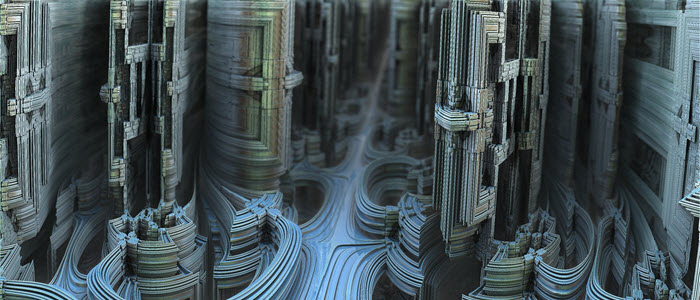Is the Black Man one of Nyarlathotep’s thousand forms, or something else? The Dreams in the Witch House is a short story by H P Lovecraft, written in 1932 and published in Weird Tales in July 1933. The protagonist Walter Gilman, a brilliant student of physics, mathematics and folklore moves into the infamous ‘Witch House’ specifically because of his fascination with the witch that lived there and how she escaped her jail using some sort of magic or formula.
“The Black Man” is not an H P Lovecraft creation, but an entity referred to in the Salem witch trials that gets people to sign their names in his book. He is the devil with which witches entreat, gain secret witch names, familiars and power.
Nyarlathotep is an H P Lovecraft creation, and the most anthropomorphized of the beings that make up the ‘gods’ of the Lovecraft Mythos. He appears directly in the prose poem Nyarlathotep, and also in the novella The Dream Quest of Unknown Kadath, where he appears similarly in Egyptian themes in the Dream world thus:
Then down the wide lane betwixt the two columns a lone figure strode; a tall, slim figure with the young face of an antique Pharaoh, gay with prismatic robes and crowned with a golden pshent that glowed with inherent light. Close up to Carter strode that regal figure; whose proud carriage and swart features had in them the fascination of a dark god or fallen archangel, and around whose eyes there lurked the languid sparkle of capricious humour.
The Nyarlathotep of Dream Quest appears to Carter in the Dream Lands, and not in the flesh. This Nyarlathotep even tells us about his variable form:
“Hei! Aa-shanta ’nygh! You are off! Send back earth’s gods to their haunts on unknown Kadath, and pray to all space that you may never meet me in my thousand other forms. Farewell, Randolph Carter, and beware; for I am Nyarlathotep, the Crawling Chaos!”
The caveat in The Dream Quest of Unknown Kadath is that this is entirely within Carter’s dream.
In The Dreams in the Witch House, an academic argument between Gilman and his fellow lodger and school mate Elwood overtly connect The Black Man and Nyarlathotep:
Whether anybody had ever managed to do this, one could hardly conjecture with any degree of authority. Old legends are hazy and ambiguous, and in historic times all attempts at crossing forbidden gaps seem complicated by strange and terrible alliances with beings and messengers from outside. There was the immemorial figure of the deputy or messenger of hidden and terrible powers—the “Black Man” of the witch-cult, and the “Nyarlathotep” of the Necronomicon. There was, too, the baffling problem of the lesser messengers or intermediaries—the quasi-animals and queer hybrids which legend depicts as witches’ familiars.
We also know that Nyarlathotep has been the subject of conversation as Gilman is creeped out by the way Brown Jenkin, the familiar of Keziah Mason, pronounces the world “Nyarlathotep” and “Azathoth”.
HPL fills his stories with multiple sources of untrustworthy validation for the strange to increase tension and fear of the unknown.
With this in mind, the Nyarlathotep of the prose poem and the Nyarlathotep of The Dream Quest of Unknown Kadath behave very differently. Consider these appearances of The Black Man:
- The Black Man never speaks and merely gestures. He never verbally interacts with Gilman, even when offering Gilman an opportunity to sign his book in blood. Dream Nyarlathotep can’t stop talking.
- The Black Man (which historically was literally supposed to be the devil) wants to take Gilman to the Throne of Azathoth to gain a secret name, but this was not conveyed directly by him, and never forced.
- The Black Man is silently present and gesturing when Keziah Mason, Brown Jenkin and Gilman steal the Polish baby for sacrifice. The Black Man, Keziah Mason and Gilman are all seen from a distance by spectators as well
The Black Man is also absent during the sacrifice, though Gilman speculates that he is elsewhere:
In his dream-delirium Gilman heard the hellish, alien-rhythmed chant of the Sabbat coming from an infinite distance, and knew the black man must be there.
There is no mistaking the parallel of the Black Man as Satan, Ruler of Hell, accepting the allegiance of witches in his book, and juxtaposing Nyarlathotep, the ‘messenger’ of the Old Ones and the “Throne of Azathoth” in primordial Chaos. One can imagine Gilman making that argument against Elwood.
But we also know that Gilman himself is not to be trusted. He doesn’t know if his dreams began with a fever, or his fever began with dreams. His professors expressed admiration in his interests, but also told him to dial back on overwork.
Non-Euclidean calculus and quantum physics are enough to stretch any brain; and when one mixes them with folklore, and tries to trace a strange background of multi-dimensional reality behind the ghoulish hints of the Gothic tales and the wild whispers of the chimney-corner, one can hardly expect to be wholly free from mental tension.
And one fact we also know, and that he’s been given access to forbidden texts (we are assuming here that these were the volumes kept at Miskatonic University):
But all these precautions came late in the day, so that Gilman had some terrible hints from the dreaded Necronomicon of Abdul Alhazred, the fragmentary Book of Eibon, and the suppressed Unaussprechlichen Kulten of von Junzt to correlate with his abstract formulae on the properties of space and the linkage of dimensions known and unknown.
Gilman then, was predisposed to the merging of witch legend and Keziah Mason with the revelations of the forbidden tomes from the very start, even as the fever-dream of the house started its work on him.
But if The Black Man isn’t Nyarlathotep, what is he? We’ll take a look at some possibilities in a future article.
